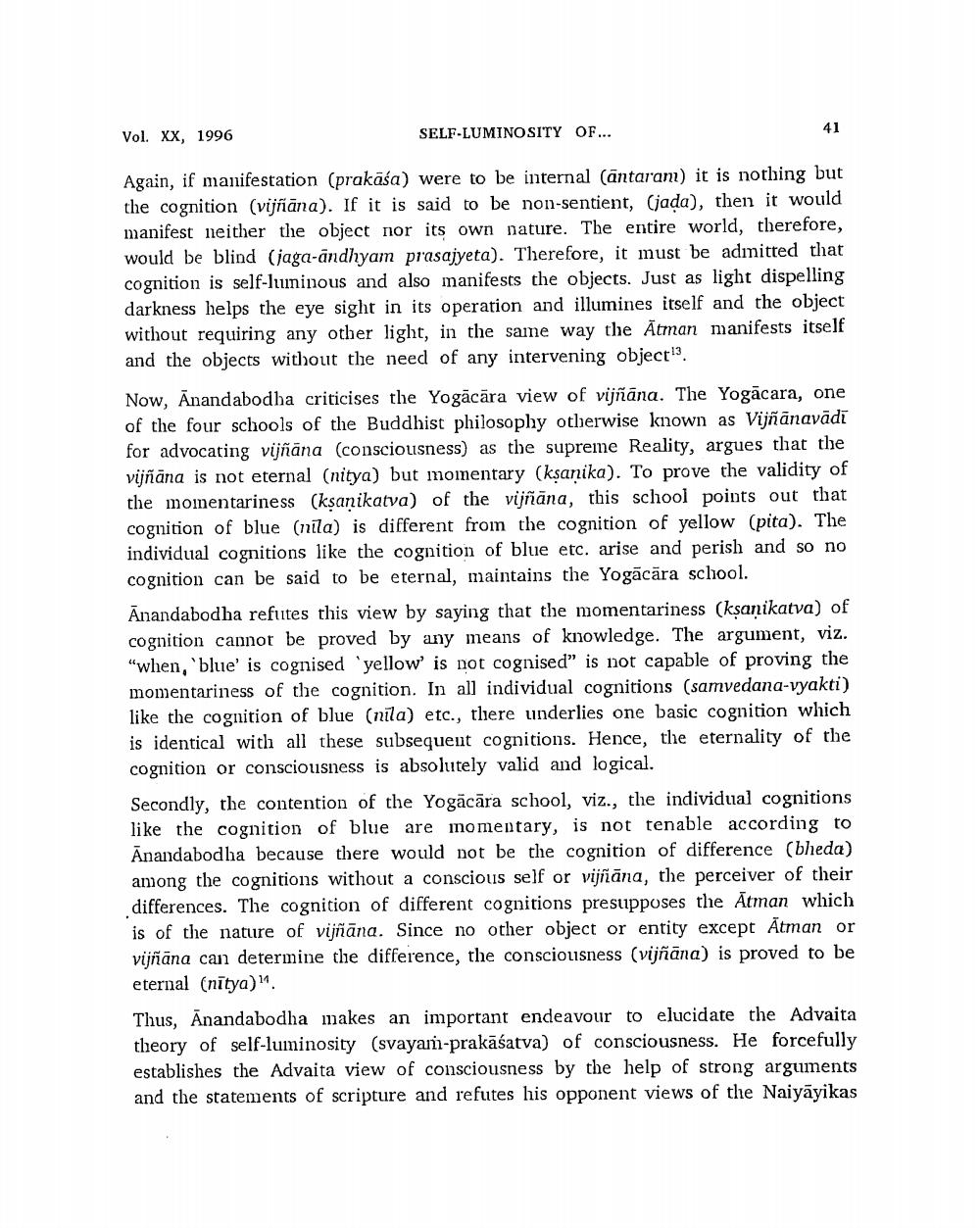________________
Vol. XX, 1996
SELF-LUMINOSITY OF...
Again, if manifestation (prakāśa) were to be internal (antaram) it is nothing but the cognition (vijñāna). If it is said to be non-sentient, (jada), then it would manifest neither the object nor its own nature. The entire world, therefore, would be blind (jaga-andhyam prasajyeta). Therefore, it must be admitted that cognition is self-luuninous and also manifests the objects. Just as light dispelling darkness helps the eye sight in its operation and illumines itself and the object without requiring any other light, in the same way the Ātman manifests itself and the objects without the need of any intervening object!3.
Now, Anandabodha criticises the Yogācāra view of vijñāna. The Yogācara, one of the four schools of the Buddhist philosophy otherwise known as Vijñānavādi for advocating vijñāna (consciousness) as the supreme Reality, argues that the vijñāna is not eternal (nitya) but momentary (ksanika). To prove the validity of the momentariness (ksanikatva) of the vijñāna, this school points out that cognition of blue (nila) is different from the cognition of yellow (pita). The individual cognitions like the cognition of blue etc. arise and perish and so no cognition can be said to be eternal, maintains the Yogācāra school. Anandabodha refutes this view by saying that the momentariness (kşanikatva) of cognition cannot be proved by any means of knowledge. The argument, viz. "when, 'blue' is cognised yellow is not cognised” is not capable of proving the momentariness of the cognition. In all individual cognitions (samvedana-vyakti) like the cognition of blue (nila) etc., tliere underlies one basic cognition which is identical with all these subsequent cognitions. Hence, the eternality of the cognition or consciousness is absolutely valid and logical. Secondly, the contention of the Yogācāra school, viz., the individual cognitions like the cognition of blue are momentary, is not tenable according to Anandabodha because there would not be the cognition of difference (bheda) among the cognitions without a conscious self or vijñāna, the perceiver of their differences. The cognition of different cognitions presupposes the Atman which is of the nature of vijñāna. Since no other object or entity except Atman or vijñāna can determine the difference, the consciousness (vijñāna) is proved to be eternal (nītya). Thus, Anandabodha makes an important endeavour to elucidate the Advaita theory of self-luminosity (svayam-prakāśatva) of consciousness. He forcefully establishes the Advaita view of consciousness by the help of strong arguments and the statements of scripture and refutes his opponent views of the Naiyāyikas




